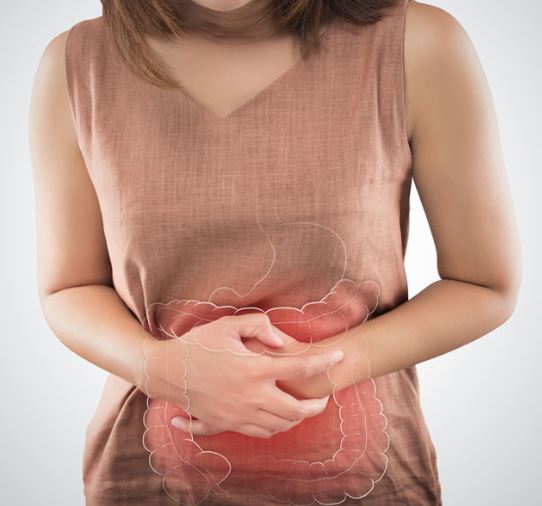A case study of Ayurvedic treatment of Grahani Roga
DOI:
https://doi.org/10.21760/jaims.9.10.42Keywords:
Grahani, Irritable Bowel Syndrome, IBS, Duodenal disorder, Case ReportAbstract
Grahani is an important part of the Mahasrotas (gastrointestinal tract). Grahani and Agni (digestive fire) have an Adhara Adheya Sambandha (mutual relationship). Jatharagni (digestive fire) governs the process of digestion, supported by the Tridoshas (three bio-humors). Due to a chronic imbalance of the Pachaka Pitta (digestive fire), Saman Vayu (the air entity that aids digestion), and Kledaka Kapha (the type of phlegm involved in digestion), a weak digestive fire (Mandagni) can lead to the release of food in its undigested form (Ama Utpatti), resulting in Grahani Roga. Any individual if suffering from symptoms like alternate passing of hard & loose bowel habits, abdominal pain, passing of foul smelling stool, mucus in faecal matter can be diagnosed as Grahani roga. In modern science, above symptoms can be correlated with IBS (Irritable Bowel Syndrome). In IBS the wall of the intestine becomes sensitive to even mild stimulus which causes excess abdominal cramps & hence the bowel movement alters along with indigestion. In India, IBS affects about 15% of adult population. This paper discusses the pathogenesis of Grahani Roga, a condition linked to impaired digestive function, and presents various treatment modalities, including herbs, Yoga, and lifestyle modifications.
Downloads
References
Chakraborty S, Das A. Management of grahani roga in ayurveda: A case study. World Journal of Pharmaceutical Research. 2021;9(15):953-61. Doi: 10.20959/ wjpr202015-19220.
Tiwari R, Pandya DH, Baghel MS. Clinical evaluation of Bilvadileha in the management of irritable bowel syndrome. Ayu. 2013;34(4):368-72. Doi: 10.4103/ 0974-8520.127717. PMID: 24696573; PMCID: PMC3968698.
Choudhary K, Gupta N, Mangal G. Therapeutic impact of deepana-pachana (appetizer-digestives) in panchakarma: An overview. IRJAY. 2021;4(1):252-58. Available from: https://doi.org/10.47223/IRJAY.2021.4108.
Acharya YT., editor. Sushruta Samhita of Sushruta with Nibandhasangraha commentary of dalhanacharya, Uttara tantra, Chapter 40, Verse 167, Varanasi: Chaukhambha Sanskrit Sansthan, 2012.
Vagbhata; Ashtanga hridaya; Sarvanga Sundari Teeka of Arunadatta; Ayurveda Rasayana of Hemadri; Edited by Bhishagacharya Harishastry Paradakara Vaidya: sutra sthana, Chapter 12, Verse 8; Publishers Chowkhambha orientalia; 10th edition, 2012; 193..
Kaviraj Govind Das Sen. Bhaisajya Ratnavali, edited by Mishra S, Grahanidoshavikara: Chapter 8, Verse 190-192. Chaukhamba Surbharati Prakashan, Varanasi, (Reprint ed.), 2013; 151.
McGraw-Hill; Harrison’s principle of internal medicine, Vol-2; 16th edition; Medical publishing division, 1779.
Vagbhata; Ashtanga hridaya; Sarvanga Sundari Teeka of Arunadatta; Ayurveda Rasayana of Hemadri; Edited by Bhishagacharya Harishastry Paradakara Vaidya: chikitsa sthana, Chapter 27, Verse 2-4; Publishers Chowkhambha orientalia; 10th edition, 2012.
Krishna CM, Bandari S, Sangu PK, Prasad PG, Narayana A, Prasanna KT. A prospective study on parpati kalpana w.s.r to panchamrut parpati. International Journal of Ayurvedic Medicine. 2010;1(3):118-28. Doi: 10.47552/ijam.v1i3.46.
Ayurveda Sara Sangraha, published by Shri Baidyanath Ayurveda Bhavan Limited, Naini, Allahabad, edition-2015, p.531.
Vaidya Yadavji Trikamji Acharya, Charak Samhita on Ayurved Dipika commentary by Agnivesh, published by Chowkhamba Krishnadas Academy, Varanasi, edition- reprint 2015, Chikitsa Sthana, Chapte-15, shloka-75, p.518.
Ayurveda Sara Sangraha, published by Shri Baidyanath Ayurveda Bhavan Limited, Naini, Allahabad, edition-2015, p.526.















